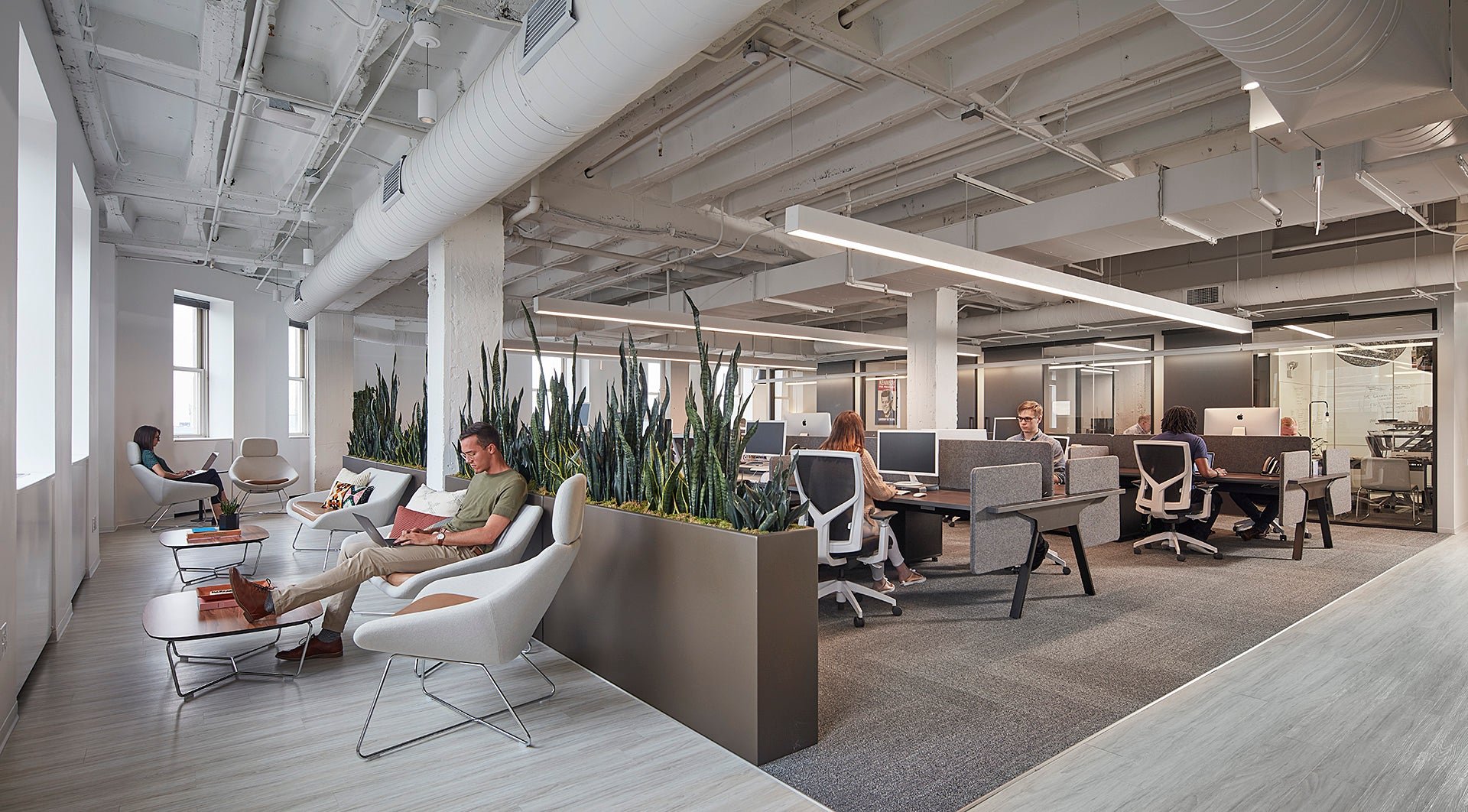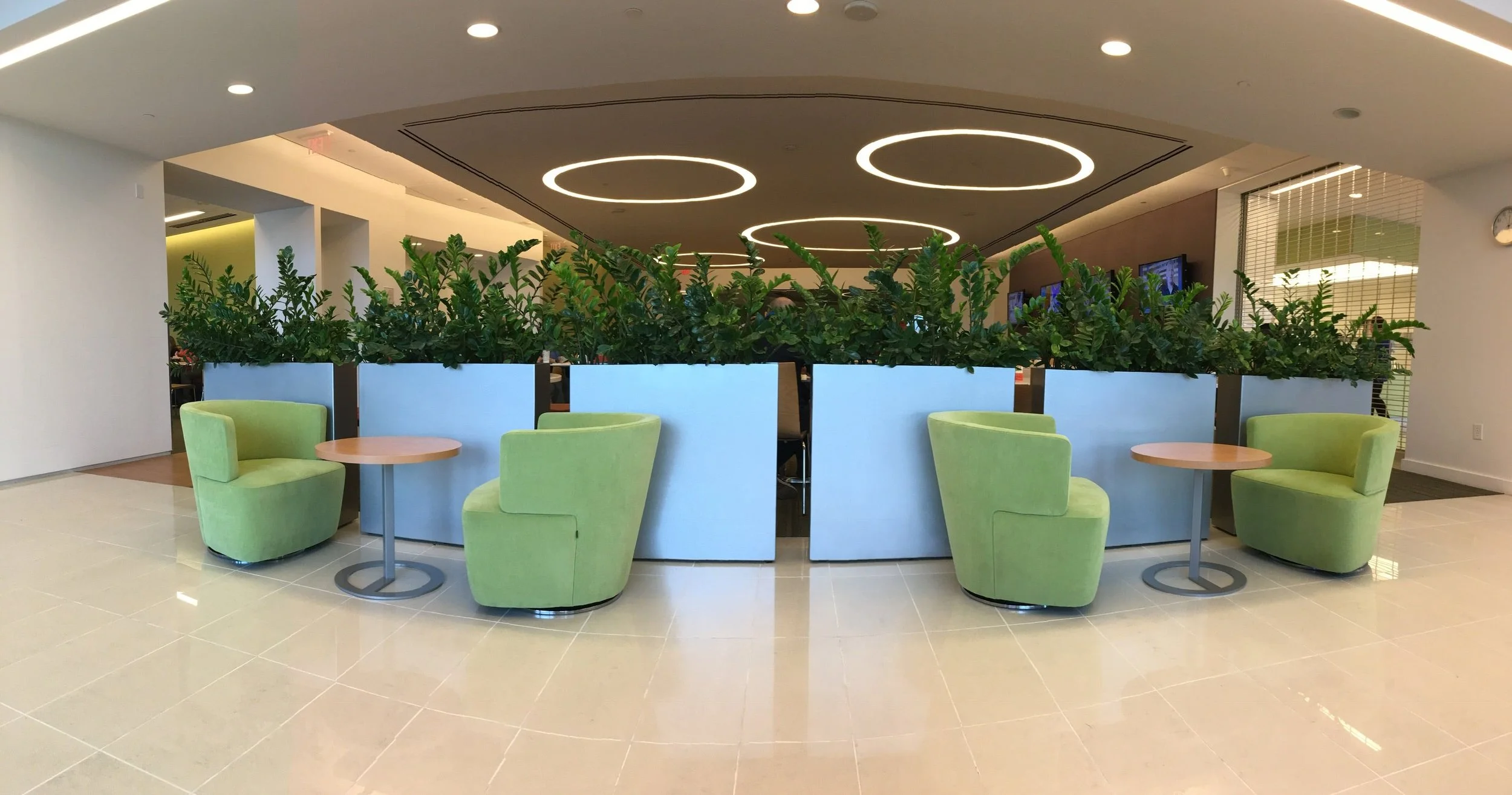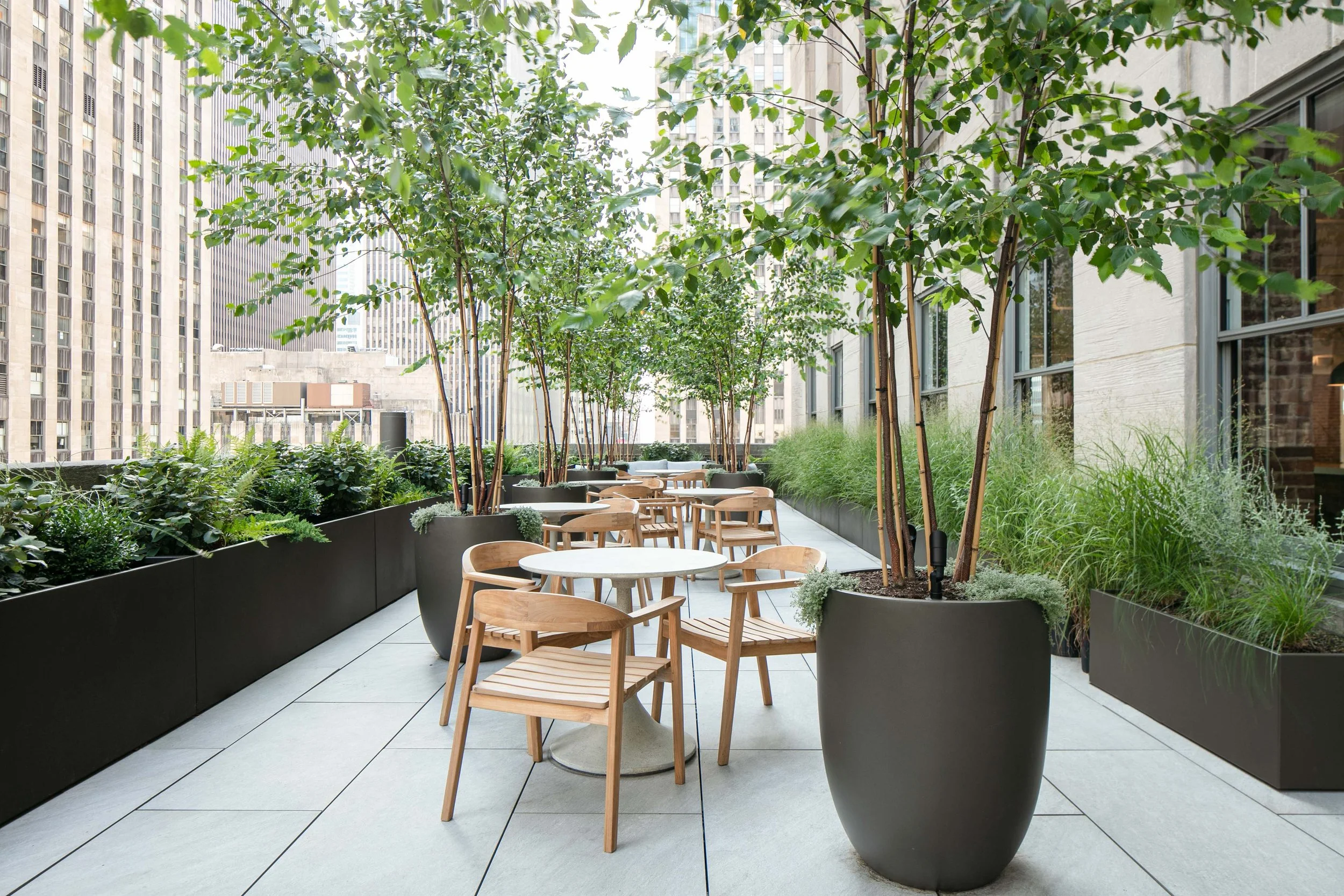Why Add Plants? Part 3: Social Benefits of Plants
Plants are so powerful that they can impact the quality of our lives and our social experience. By removing air pollution, reducing stress, encouraging physical activity, and promoting social ties and community, plants and trees promote health and overall social well-being.
When consumers really understand the social benefits associated with people-plant interactions, they begin to realize plants are a necessity — rather than a luxury or a decorative afterthought.
Wondering what proves that Plants Are a Necessary Element for all spaces?
Dr. Charlie Hall and Melinda Knuth, both at Texas A&M University, have compiled hundreds of peer-reviewed studies and PureModern has pulled some of the big ideas from that compilation and other pieces of research for you.
Why?
So you can better understand and share important information about the power of plants with your clients.
In the third installment of this four-part series, you’ll find social benefits and supporting statistics that you might just consider using in your next client meeting. If you missed the first two installments, you can find them here:
Modern Elite Rectangle Planters at Kivvit in Chicago, IL
The Reimagined Landscape Consumer
According to a recently published Accenture report, there is a new type of consumer out there. Accenture calls this market segment the Reimagined Consumer. The Reimagined Consumer will abandon brands that don’t support their values and pay more attention to brands that do.
Accenture found that the pandemic compelled many buyers to look inward and prioritize relationships and responsibility. As a result, the Reimagined Consumer applies this new mindset to where, what, and how they make purchases.
In other words, now more than ever, your clients are likely seeking to influence their community and use purchases as a way to confirm how they see themselves in the world.
Modern Elite Rectangle Planters at Kivvit in Chicago, IL
The Cold Hard Facts
Most people get the general feeling that plants are somewhat important. But getting your clients to adjust their mindsets or increase the budget is challenging without real proof of the benefits.
Whether your client is a municipal leader, a policymaker, or a commercial or residential property owner, stakeholders find it easier to justify funding decisions when they truly understand the vast physiological benefits plants provide to every space.
Luckily there is plenty of data that proves the significant importance of incorporating greenery into residential and commercial design plans. Today’s residential and commercial landscape consumers — reimagined or not — will sit up and take notice when you discuss the following social benefits that plants provide:
Plants support community ties and reduced crime rates.
Children with views of trees are more likely to succeed in school.
Including greenery in community design projects elevates feelings of social engagement and being valued for the elderly and economically disadvantaged populations.
Even more good news: every benefit you’ll see in this article has been proven to occur not only in natural green spaces, but in the built environment as well. This includes any human-made space where people live, play, work, rehabilitate, and learn.
So there is, in fact, cold, hard data that supports your value proposition when advising your clients to incorporate plants into their budget so they can reap the benefits in their newly redesigned spaces. And there is proof that those benefits include a return on investment.
In the third installation of this four-part series, keep reading to learn more about the specific positive social impact plants have on the quality of life.
Modern Elite Planters at Brooklyn Bridge Park Pier 6 in Brooklyn, NY
Benefit #1: Stability and safety
Your residential property owners will love the fact that, according to a Gallup report, natural elements provide aesthetic components that tend to deepen connections between the residents and the place where they live.
Whether your client owns their own home or a sprawling apartment complex, this is a compelling argument to incorporate plants.
“Our theory is that when a community’s residents are highly attached, they will spend more time there, spend more money, they’re more productive and tend to be more entrepreneurial,” says John Clifton, deputy director of the Gallup World Poll, who conducted the survey.
And with 92% of Americans claiming that community safety is the leading indicator of neighborhood desirability (Americas 2012), your residential landscape clients will appreciate the fact that beautification efforts — that typically incorporate plants and landscape projects — often improve safety statistics (Spector 2016).
Modern Elite Metal Planters at Landmark Atlantic Plumbing Cinema Washington DC
Benefit #2: Plants can lead to a better semester
Plants provide students with a multi-sensory experience that encourages them to be increasingly curious and observant.
According to several studies, adding plants to areas where students commonly work can improve students’ attention and performance in school.
More specifically, mental fatigue diminishes when students are around plants (Patil et al, 2011).
Green spaces encourage nature-induced “shots of serotonin” (Park and Riley 2015).
In addition, plants satisfy functional needs required for learning. Large open spaces such as cafeterias and study halls can make students feel intimidated. But foliage creates inviting cozy spaces that encourage students to spend more time studying there.
One study (Park et al, 2019) showed a significant decrease in theta waves in the brain’s frontal lobe when plants were present. For students, this means viewing plants triggered improvements in attention and concentration as well as boosted mood and feelings of comfort and relaxation.
If your client list includes any high school, elementary school, college, or university, that client will want to know about how plants can increase draw, attention, and even enrollment. You might even consider mentioning a quote from entomologist E.O. Wilson:
“Nature holds the key to our aesthetic, intellectual, cognitive, and even spiritual satisfaction.”
Modern Elite Metal Planters at National Cancer Institute Rockville, MD
Benefit #3: Plants can reach underserved populations
Economically disadvantaged groups and the elderly can benefit significantly from exposure to natural elements.
Run these ideas by clients who are city planners and developers of senior centers and long-term care facilities to show them the deep value your landscape services can provide.
Economically-disadvantaged populations
According to a study by Greenwire, neighborhoods with 90% or more of their residents living in poverty have 41% less tree canopy than communities not facing the same struggles. This is a problem on many levels:
Increased health risks. Urban heat islands are often much hotter than surrounding neighborhoods. According to American Forest, current warming trajectories are expected to significantly increase heat-related deaths in coming years.
Overloaded sewer systems. Fewer plants in low-income areas means more runoff when it rains.
But incorporating greenery into these areas can significantly improve the community.
One study showed that residents in Flint, Michigan worked to improve their struggling neighborhood by holding cleanup days for vacant lots and abandoned buildings and symbolically “owning” them by adding lighting and planter benches, restoring sidewalks, and planting trees (Zimmerman 2018).
An article from NPR echoed this sentiment when Shirley Bell-Wheeler, a citizen in Cleveland, shared what she appreciates most about a new park in her neighborhood. She said the beauty just makes her feel better, "like we matter, somebody cares about us," she says. "It's a statement. Of value."
Elderly populations
As people age, they generally become less mobile and face smaller social networks.
However, studies show (Kemperman and Timmermans 2014) that social engagement and green space go hand in hand. Incorporating green space into the living environment provides a meeting place that supports social interaction.
Elderly populations also struggle with cognitive decline. But one study published in Environmental Health Perspectives shows that the decline in cognitive scores was 4.6% smaller for participants living in greener neighborhoods.
4.6% might sound like a small number, but considering the devastating impact that cognitive decline can have on one’s quality of life, even the smallest difference is significant.
Connect Modular Planters at Rockefeller Center New York, NY
Leverage the Power of Plants to Drive Social Change and Momentum for Your Clients at the Same Time
Your clients want to create beautiful spaces. And the people who use those spaces want to enhance the quality of their lives.
So whether your next design project is commercial or residential, planters are an innovative and economical way to deliver exactly what your clients need.
Innovative designers are helping clients understand that quality of life is a highly compelling value proposition. Use this research to stay ahead of the curve.
For help selecting the right plants and planters for your next project, get in touch with us today. We’re here to help!

























